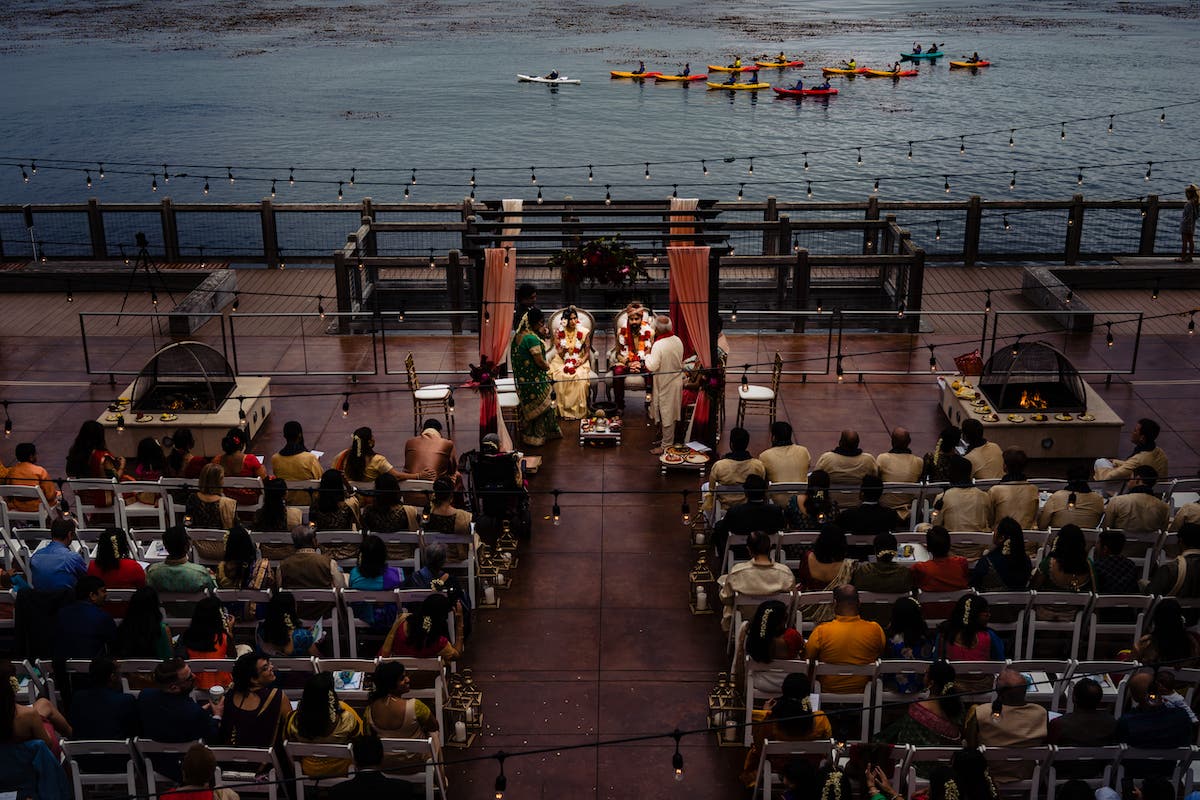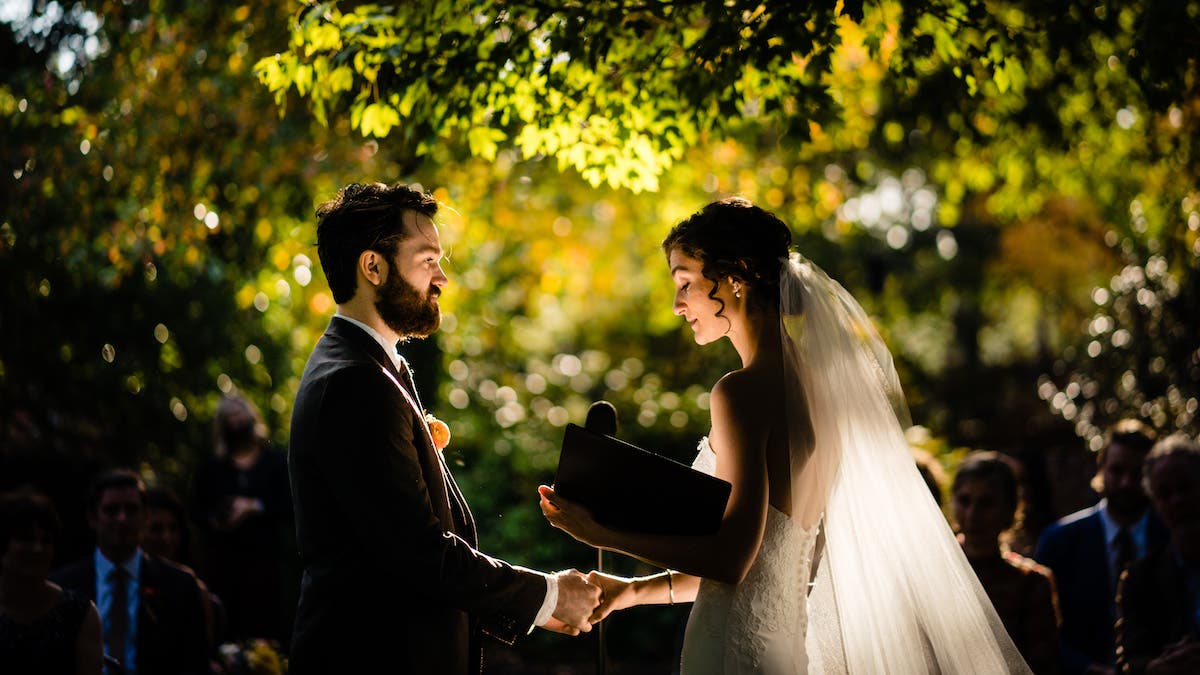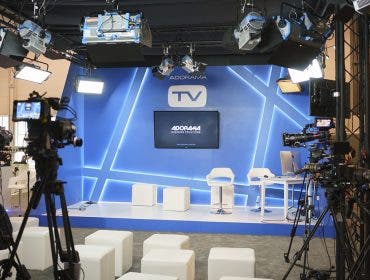When it comes to wedding photography gear, a high price tag doesn’t always mean it will fit your needs. As a professional wedding photographer for more than a decade, I have found that the main factors I need are reliability, speed, ease of use, and function. Sometimes the added function and build of a higher-end product are worth the added price — but sometimes it’s not. In this wedding photography buying guide, I’m going to line out some key pieces of gear that will serve any professional wedding photographer well.
Best Cameras for Wedding Photography
The camera you choose will have a major impact on all the other gear you add to your kit. I’ve chosen two cameras from four of the best wedding photography brands available. One camera will be the best of the best, while the second will still do an amazing job for anyone shooting full time.

Sony Alpha 1 Mirrorless Digital Camera
While all the cameras on this list are great, my brand of choice is Sony. And there is no better camera for weddings than the Sony a1. It has a high-resolution 50MP sensor, great dynamic range, and unmatched speed at 30fps. You won’t find a single part of the wedding day that this camera can’t handle. For me, the stand-out feature of this camera is the silent shutter with no rolling shutter. This allows you to be completely silent so you can capture all those intimate moments without any interruption.
Sony Alpha a7 IV Mirrorless Digital Camera
If the Sony A1 is a Lamborghini, then the Sony A7 IV is a Corvette. It’s still powerful and feature-rich — just not as many bells and whistles, and a bit slower. For the price, this camera is anything but a sleeper. With a whopping 33MP and ten frames per second, you still have plenty of resolution and speed for a wedding day. If you are interested in video, this camera can also record at 4k 60p for all your buttery smooth slow-motion wedding moments.
Canon EOS R3 Mirrorless Camera Body
With the built-in vertical grip of the Canon EOS R3, you won’t strain your wrist when changing from horizontal to vertical. It can reach 30 frames per second. From there, you’ll have all your images captured on a 24MP sensor, which for me, is actually an ideal resolution for weddings. You lose a bit of cropping ability, but you will save a ton of memory by storing smaller files.
Canon EOS R6 Mark II Mirrorless Digital Camera Body
With the Canon EOS R6 Mark II, a 24MP sensor is paired with high-end autofocus and amazing video performance. This camera would serve any professional wedding photographer or even videographer well. The image processor is taken from the higher-end Canon R3, so you know the speed and performance won’t take a hit with the lower price tag. You can actually shoot at up to 40fps with the silent shutter and 12fps with the mechanical shutter.
Nikon Z8 Mirrorless Digital Camera Body
With a 45MP sensor that can shoot 8k video, you have all the resolution you could need. And while you can shoot 20fps in RAW, if you don’t mind shooting a lower-resolution JPEG file, you can even get up to 120fps. Aside from that, this camera will give you one of the best autofocus systems on the planet and pair it with a build quality that will last you for years.
Nikon Z 7II Mirrorless Digital Camera
With this camera, you won’t take a step back in resolution when compared to its bigger brother. At 45MP and 10fps shooting, you should have more than enough for any professional wedding day moments. Before the launch of the Z9 and Z8, this was also Nikon’s best mirrorless camera, so you know you’re getting something good even though the price is on the more reasonable side.
Fujifilm X-H2S Mirrorless Digital Camera Body
When it comes to wedding photography, most people say full-frame sensors are the way to go. But if anyone can prove that statement wrong, it’s Fujifilm. And the Fujifilm X-hs2 is one of the best they have to offer. The built-in 26MP sensor is the perfect blend of resolution and file size. Need to shoot in low light? This camera has -7EV on its autofocus system, making it that much easier to quickly grab focus in low-light situations. If you want to shoot photos and videos, this is the Fujifilm camera you want.
Fujifilm X-T5 Mirrorless Digital Camera Body
This camera is a bit cheaper than the Fuji X-HS2, but no slouch. And if video isn’t your thing, I think the XT5 will be a better option for you. You will still get the -7EV autofocus and other amazing features, like in-body image stabilization. But you get it all on a higher resolution 40MP sensor. And an added bonus, I think the Fujifilm X-T5 is one of the best-looking cameras on the market!

Best Lenses for Wedding Photography
Tamron SP 24-70mm f/2.8 Di VC USD G2 Lens
One of the staples when it comes to lenses for wedding photographers is the 24-70mm focal range. Mostly all the previously mentioned camera brands offer a lens with this range, as well as some aftermarket lens manufacturers like the Tamron SP 24-70mm f/2.8 Di VC USD G2 Lens. The key here is to get a lens that is fairly fast — like a f/2.8 aperture. The 24mm to 70mm focal range is enough to get you through an entire wedding day without having to change lenses.
Sigma AF 35mm f/1.4 DG DN Art Lens
While the 24-70mm lens is an all-around performer, the 35mm lens is probably one of my all-time favorite lenses. And the Sigma AF 35mm f/1.4 DG DN Art Lens is one of the best in this range. While you will be limited to 35mm when using this lens, I feel that this limitation is actually a good thing. And where you lose some freedom in the focal range, you gain that in the aperture department. With a minimum aperture of f/1.4, you’ll get a narrower depth of field which will give you more of that buttery bokeh blur everyone loves.

Fujifilm XF 30mm f/2.8 R LM WR Macro
When it comes to lenses, there are lenses that you can use all day. Then there are specialty lenses that are best used for specific jobs. The macro lens is one of the one of the first specialty lenses I’d add to your bag. Something like the Fujifilm XF 30mm f/2.8 R LM WR Macro will give you the ability to get nice and close for images of the rings, or other details such as flowers, cake, and the lace on the wedding dress. A macro lean is also great for getting close-up details of the bride’s lipstick or eyelashes.
Tamron 100-400mm f/4.5-6.3 Di VC USD Lens
Another great lens to have in your professional wedding photography bag is a telephoto lens — like the Tamron 100-400mm f/4.5-6.3 Di VC USD Lens. This type of lens is great for situations where you just can’t get close enough, like the first kiss. Another great use is for the compression qualities. This allows you to make objects in the background appear larger and closer to your subject.

Lastly, you might want to think about adding a filter to the front of your lens. For example, NiSi ND filters will allow you to get a slower shutter if you want to play with shutter drag images. Or if you are using off-camera flash, a good ND filter can allow you to use a lower aperture when shooting in bright conditions.
Lighting for Wedding Photography
Artificial lighting is probably one of the most important tools you can add to your bag. I’d recommend spending time and money on lighting before investing in the best of the best cameras and lenses. Because, as a wedding photographer, you don’t always get to decide when and where you take images. And you definitely don’t get to decide on the weather. With good lighting, you can take a boring space and make it look epic.
Flashpoint eVOLV 200 Pro TTL Pocket Flash Kit
When it comes to lighting, I don’t think there is a better bang for your buck than the Flashpoint eVOLV 200 Pro TTL Pocket Flash Kit. This light is probably my most used flash of all time. It’s powerful enough to combat almost any lighting situation, yet compact enough to fit in almost any bag.

Flashpoint Zoom Li-ion 2 Speedlight Kit
But while an off-camera flash is the best way to go, you will almost certainly need an on-camera flash. My go-to on-camera flash is the Flashpoint Zoom Li-ion 2 Speedlight Kit. This round head flash gives a great fall-off of light, and there is enough power to bounce this light off even taller ceilings. The Flashpoint Zoom Li-ion 2 also has a built-in trigger system to control your off-camera lights.
Glow Grand Box 16 Pro 55 Parabolic Softbox
Once you have your lights, it’s time to start modifying them. And while I think there is something special about clean hard light from a flash, your couples will thank you if you light them up with a nice big beautiful soft light. Try the Glow Grand Box 16 Pro 55 Parabolic Softbox. The parabolic design gives you more light-shaping potential, and the large design will give you that soft wrapping light your couples will love.
Flashpoint Wave Commander II Wireless Remote Shutter Kit
Lastly, the Flashpoint Wave Commander II Wireless Remote Shutter Kit might be worth adding to your bag as well. This setup can trigger your camera and light remotely for situations where you need more camera angles than you have photographers. For example, maybe you are shooting alone but need two vantage points for the ceremony. With this, you can have a second camera on a tripod and just trigger it remotely.

Accessories for Wedding Photography
In addition to all the above gear, there is also room for other accessories that will make a wedding photographer’s life way easier. These items might make your wedding day run smoother, ease the strain on your back, or make your after-wedding workflow faster and more productive. Either way, don’t discount these seemingly little items because they can make a world of difference.
Manfrotto XPRO Monopod+
3Pod Orbit 4-Section Carbon Fiber Tripod
When you are set up at a location for a long time — either waiting to get the shot or maybe it’s just a long ceremony — a good monopod will give your arms a rest while still giving you easy access to continue shooting. Something like the Manfrotto XPRO Monopod+ 4-Section Aluminum Monopod and 3Pod 4-Section Carbon Fiber Photo/Video Monopod is a great option. This added tool will save your arms but, because it’s carbon fiber, it won’t weigh you down when traveling.

Flashpoint 10′ C (Century) Light Stand
If you are using lights, then you absolutely need a good light stand. I recommend having a few different options. Something like the Flashpoint 10 C (Century) Light Stand is great for when setting up for portraits or the reception — paces where you need a sturdy stand with lots of adjust abilities. Then, for the fast-moving parts of the day where you want to be quick and mobile, check out the CheetahStand C8 – 3 Section Aluminum Light Stand.
SanDisk 128GB Extreme PRO UHS-II V60 SDXC Memory Card
For me, my go-to memory card is the SanDisk 128GB Extreme PRO UHS-II V60 SDXC Memory Card. This card has enough space that you won’t have to change a ton of times on the wedding day. It’s also fast enough to clear your camera buffer quickly while also uploading your images to your computer with speed.
Seagate Expansion 4TB USB 3.0 Portable External Hard Drive
Nothing fills up your computer storage faster than a file full of wedding images. And the more weddings you photograph, the more space you need. The Seagate Expansion 4TB USB 3.0 Portable External Hard Drive will give you enough space to have all your working files. I actually recommend having two — one for working on, and a second to use to backup all your images.
Lowepro ProTactic BP 350 AW II 16L Backpack
There are two types of camera bags you’ll need on the wedding day. One will be your quick-access bag. This is the bag that you have on you at all times. It’s where you will store the lenses you need to quickly access, as well as extra batteries ad memory cards. A great option is the Lowepro ProTactic BP 350 AW II 16L Backpack.

Slinger V2 BigBag Pro Video Handbag XL with Wheels
While your quick-access bag is for the things you need fast, this bag is for everything else — like backup cameras and lenses, lights when you don’t need them, specialty lenses, and other accessories that you don’t need glued to your side. For this, a great option is the Slinger V2 BigBag Pro Video Handbag. It’s big enough to hold a good amount of gear while still being portable enough to carry around a location when needed.
Canon imagePROGRAF PRO-1000 17″ Professional Photographic Inkjet Printer
As a professional photographer, the worst thing to happen is for the images to live and die on a hard drive. Offering prints to your clients will help solve that issue. A great way to do this is to create the prints yourself. One great option is the Canon image PROGRAF PRO-1000 17 Professional Photographic Inkjet Printer. This printer has larger print heads and more nozzles in order to give you faster print speeds. This is all while still giving amazing quality and detail across various paper types.
HP DesignJet T650 Large Format Printer
But if you are after larger prints than the PRO-1000 can deliver, check out the HP DesignJet T650 Large Format Printer. With this larger setup, you can get prints of various sizes automatically without having to manually change the settings on the printer.
Conclusion
In my opinion, you can photograph professional weddings for years and years with nothing more than the gear on this list. And while there may be other offerings such as other lenses, lights, or stands that weren’t mentioned, I feel that this list gives a great balance of reliability, ease of use, as well as price.
I hope this buying guide has been helpful as you continue to push yourself to create better images for your clients. For more inspiration, check out this behind-the-scenes video with renowned wedding photographer, Vanessa Joy.






